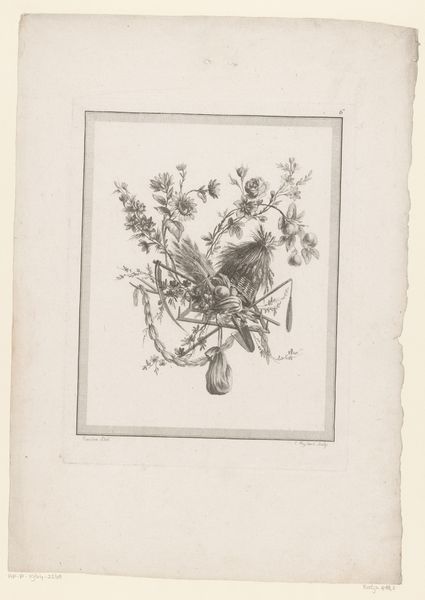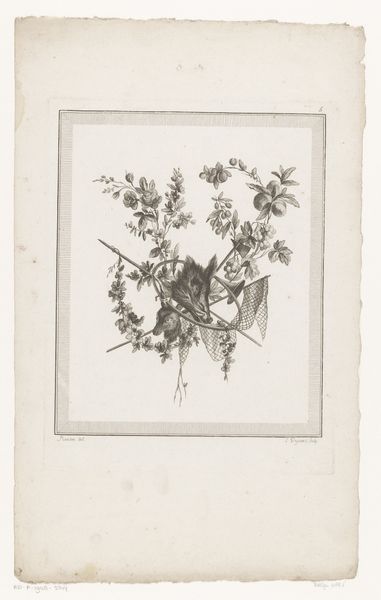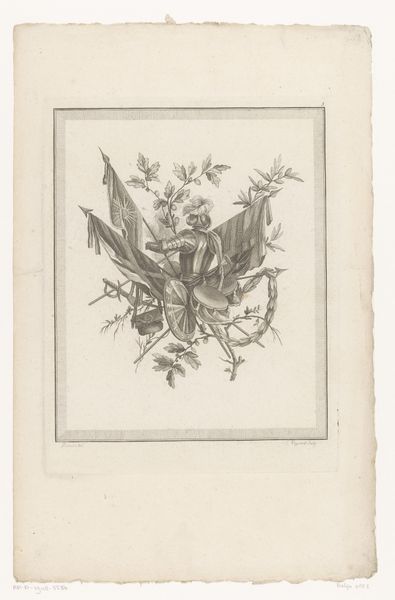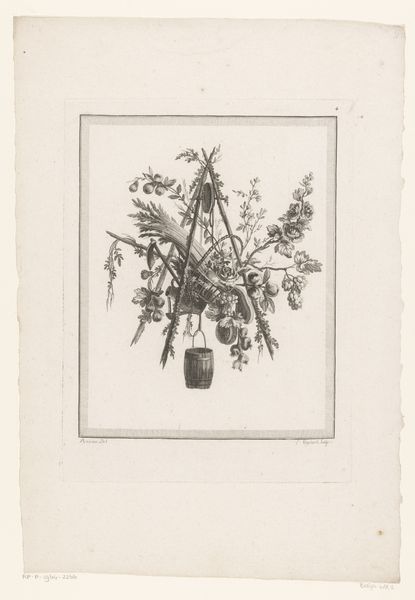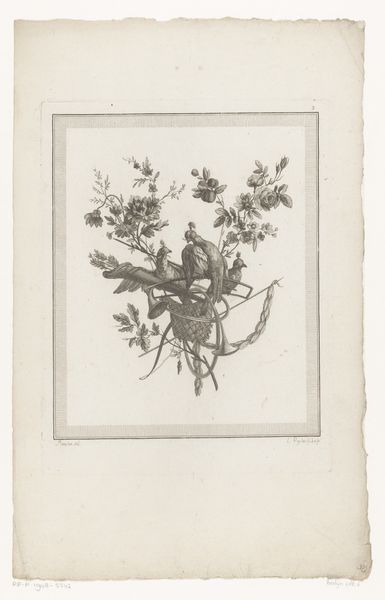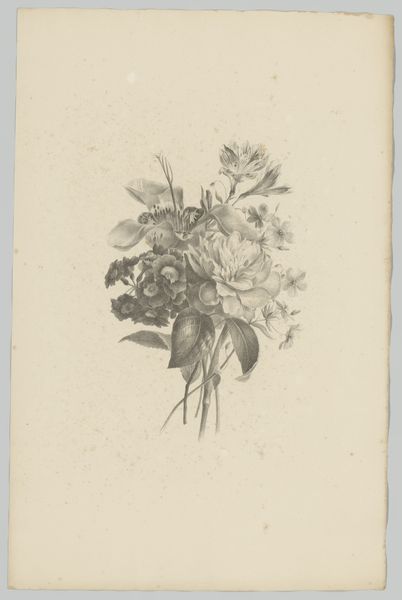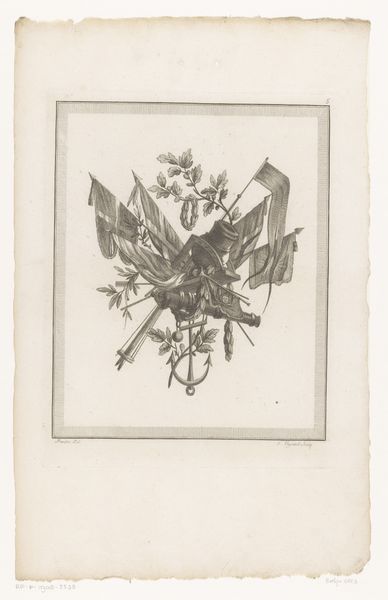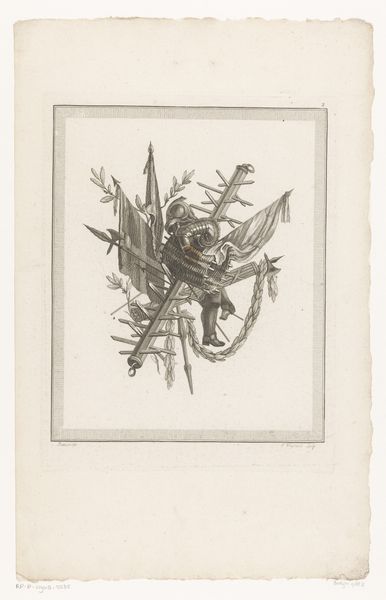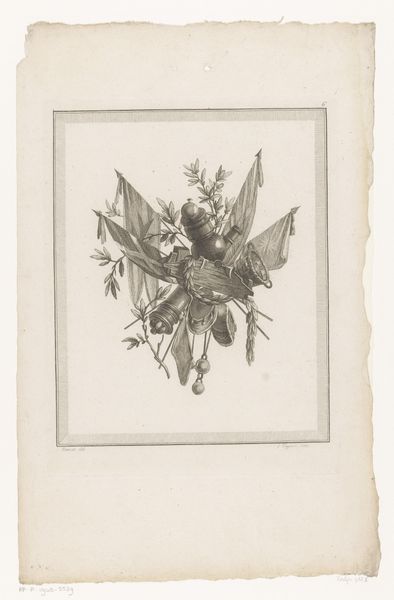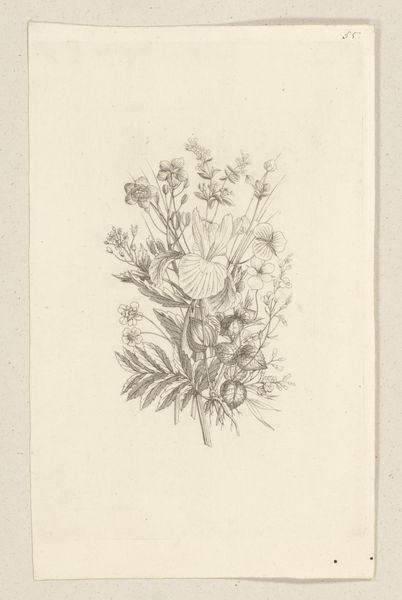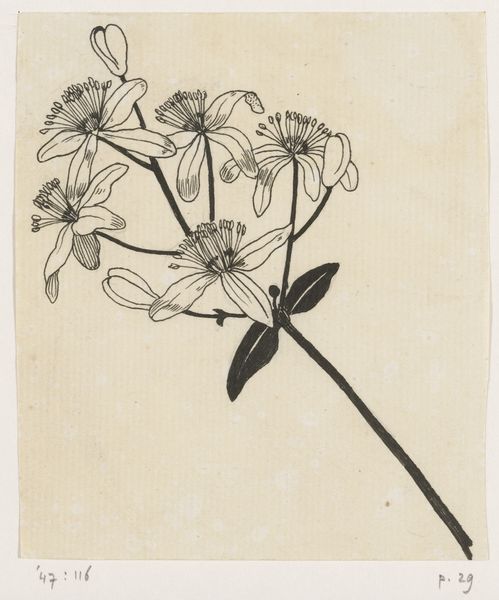
Dimensions: height 280 mm, width 218 mm
Copyright: Rijks Museum: Open Domain
Etienne Claude Voysard made this ‘Jachttrofee’ – or hunting trophy – using etching, a printmaking technique, sometime in the late 1700s. The print has a muted palette, but the etched lines are remarkably delicate. Note the careful gradations of tone in the dead hare, the bird trap, and the gun. To achieve this effect, Voysard would have covered a copper plate with a waxy ground, scratched his design through it, and then bathed the plate in acid. This process etches the lines into the metal, which can then be inked and printed. Consider how these processes have imbued the artwork with social or cultural significance. Voysard was deeply engaged with the traditions of fine art printmaking, but also with the culture of aristocratic sport. The image shows a carefully arranged still life of hunting equipment and dead game. The amount of work involved in the production process is considerable, reflecting the labor that would have been required to put food on the table. Looking at this artwork, it emphasizes the importance of materials, making, and context in understanding the full meaning of an artwork, challenging traditional distinctions between fine art and craft.
Comments
No comments
Be the first to comment and join the conversation on the ultimate creative platform.
